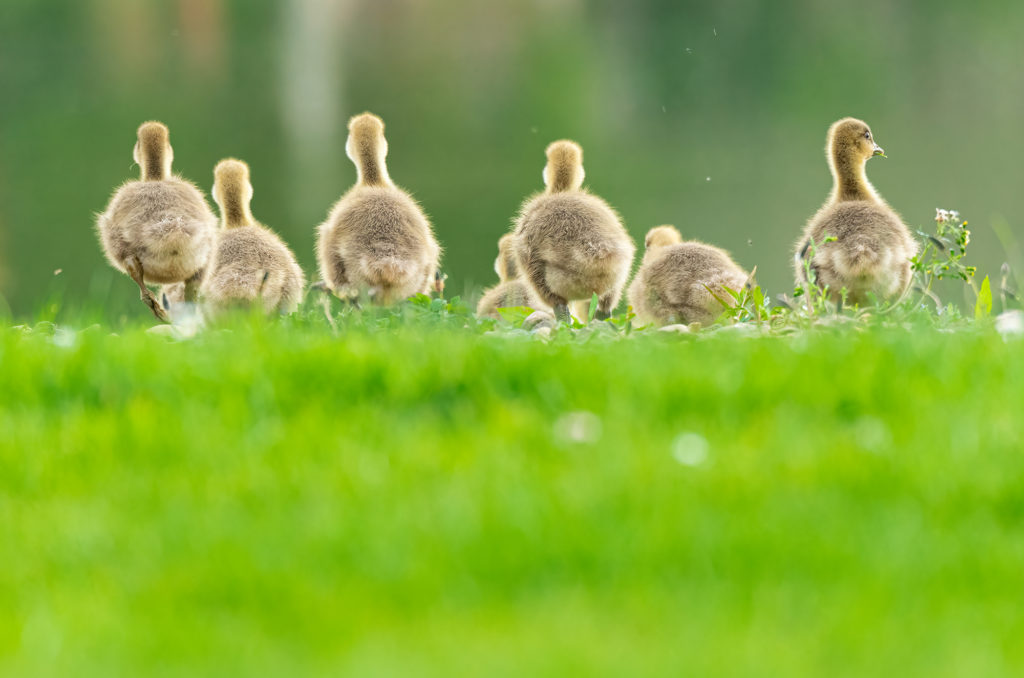The greylag goose is our only native breeding goose and can be spotted all over the place, making them an ideal subject to point your lens at. They are also surprisingly pretty birds when viewed up close. Their pale grey-brown plumage is the perfect contrast to the orange and pink bare parts, which remind me of the colours of a fruit salad sweet.
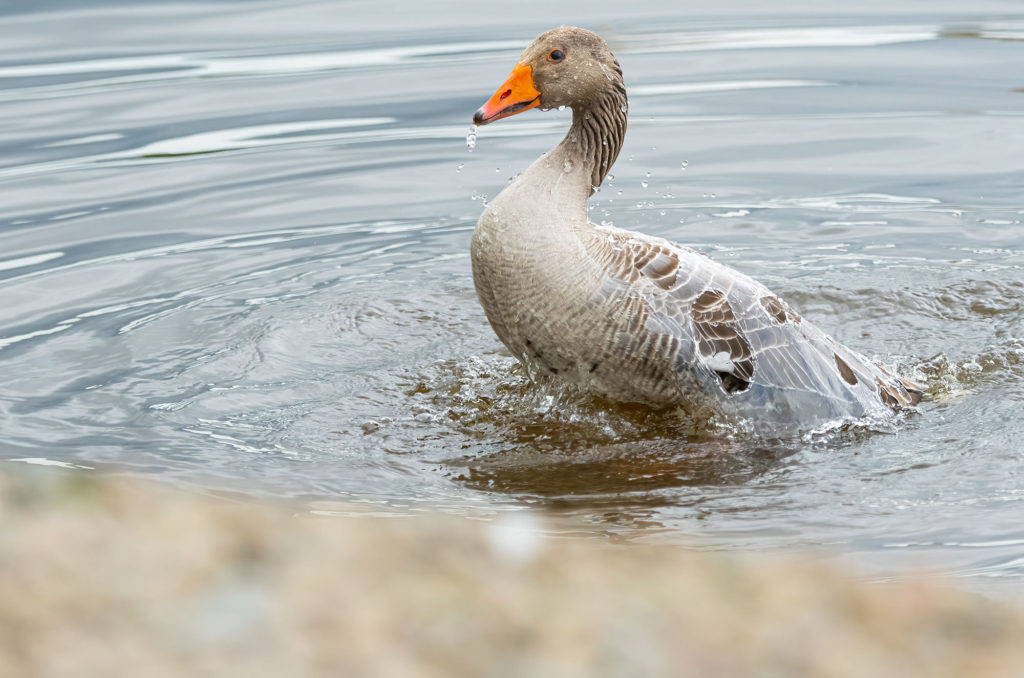
These geese are grazers due to their short bills. They can often be spotted feeding in fields and meadows, alongside cows and sheep, although grain, root crops and vegetation are also on their menu.
They may be a common sight now, but ongoing persecution caused a huge reduction in their numbers. By the late 1900s, greylag geese could only be found in the far north and west of Scotland. In the 1930s and 1960s, birds were released in southwest Scotland, Wales and parts of England to re-establish the species. Since then, the two populations (original and released) have grown and spread. They have overlapped so much that all greylag geese breeding in Britain are currently recognised as a single population.
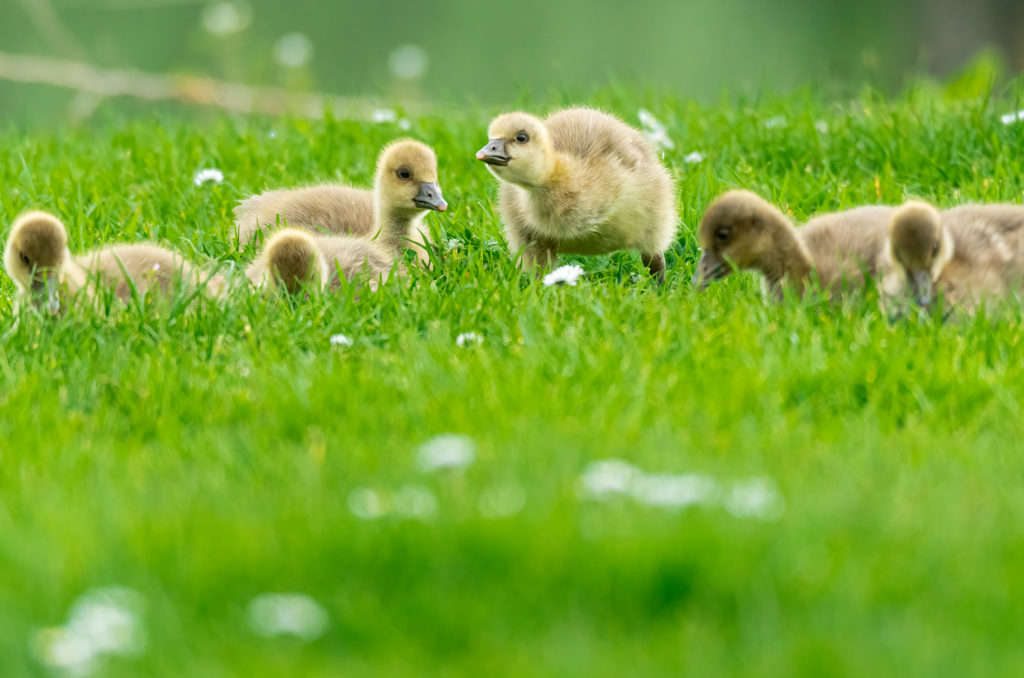
I captured the image above earlier this month at Strathclyde Country Park. I had to carefully approach this nursery full of greylag goslings to avoid worrying their parents. I sat on the grass a respectful distance away and, once I was satisfied that the geese were comfortable, was able to capture plenty of images of their antics. That was until an excited labrador came bounding over. The dog had a stick to play with and wasn’t interested in the geese, but the adults weren’t taking any chances and quickly ushered their babies away toward the loch.
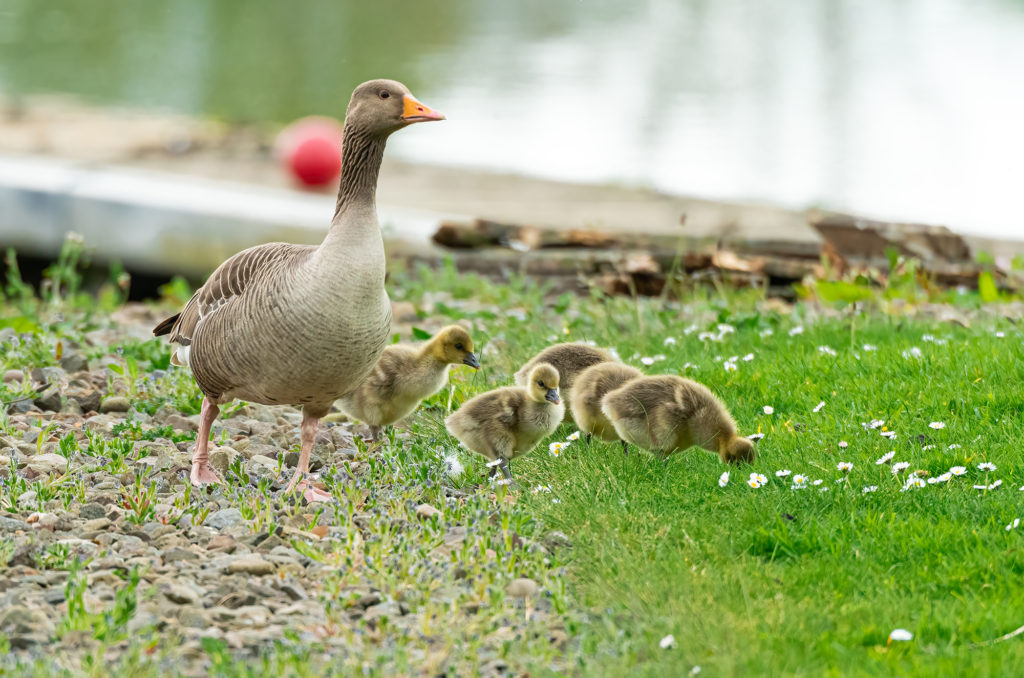
These birds will vigorously defend their nesting sites, chasing all other greylags and large birds out of their territory. Once the goslings have hatched, they return to being sociable. Several families sometimes group together, as I witnessed. It was noticeable that all the other non-breeding greylags were grazing and snoozing at the opposite end of the loch.
The parents were understandably guarded while the other greylags were more relaxed, although I continued to keep a respectful distance between us. Species such as this that are comfortable around humans provide great opportunities to experiment with your camera settings, alter your position, and capture a variety of behaviours.
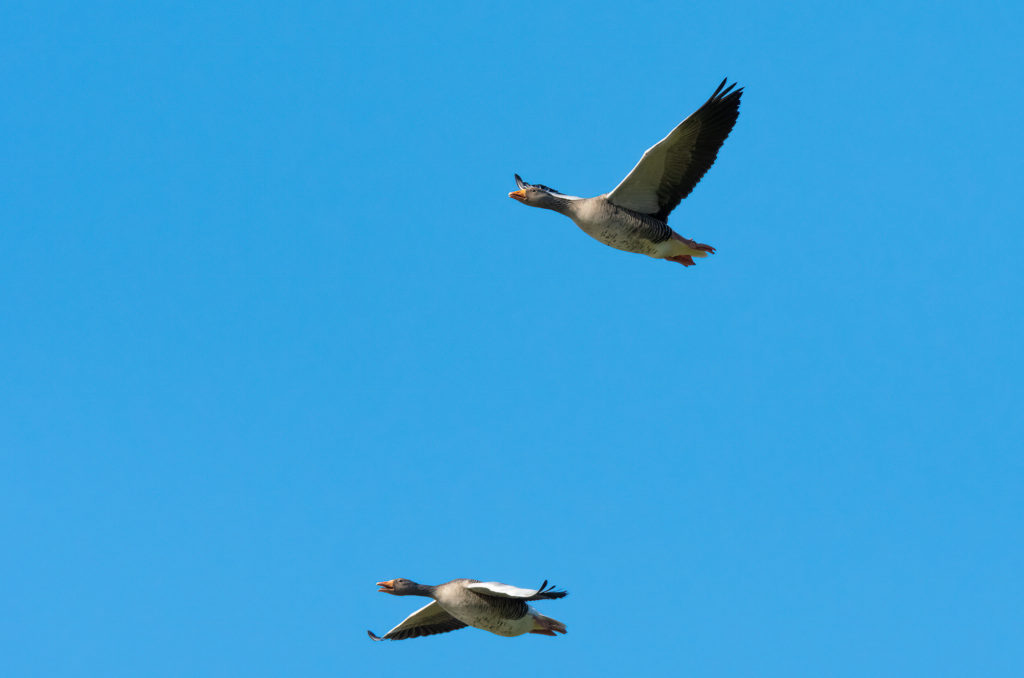
They are also handy for practising your panning and focussing skills to photograph them in flight. I had to react quickly to capture this pair (in the image above) in flight on a sunny day. I was facing the opposite direction and only realised they were heading our way when I heard them honking. I quickly spun around and changed my settings just in time. The azure blue sky provided the perfect backdrop. Although I still occasionally struggle capturing birds in flight, I have improved by sticking with a few top tips, including being aware of the background to ensure that my camera can easily lock focus.
The greylag goose is a perfect example of a common species that provides ample opportunities for testing your photography skills, particularly in spring. What they lack in rarity, they make up for in attitude and adorable offspring.
